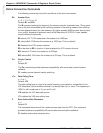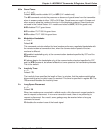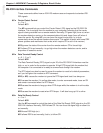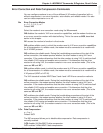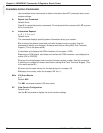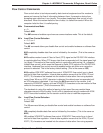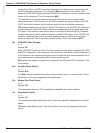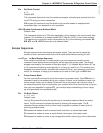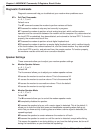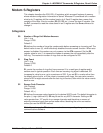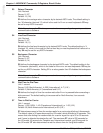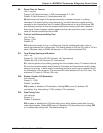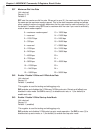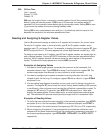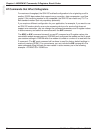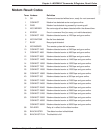
82 MultiModemISI Hybrid Series, ISIHI-2S
Chapter 4—MODEM AT Commands, S-Registers, Result Codes
Modem
Diagnostic Commands
Diagnostic commands help you troubleshoot your modem when problems occur.
&T
n
Self-Test Commands
n
= 0, 1, 3, or 6
Default: none
The &T command causes the modem to perform various self-tests.
&T0 causes the modem to stop any test currently in progress.
&T1 causes the modem to perform a local analog loop test, which verifies modem
operation and the connection between the modem and the computer. Any data entered at
the local DTE is modulated, then demodulated, and returned to the local DTE. To function
properly, the modem must be off-line.
&T3 causes the modem to perform a local digital loopback test.
&T6 causes the modem to perform a remote digital loopback test, which verifies integrity
of the local modem, the communications link, and the remote modem. Any data entered
at the local DTE is sent to, and returned from, the remote modem. To function properly,
the modems must be online with error correction disabled.
Speaker Settings
These commands allow you to adjust your modem speaker settings.
L
n
Monitor Speaker Volume
n
= 0, 1, 2, or 3
Default: L2
The L command allows you to adjust your modem speaker volume.
L0 causes the modem to use low volume. This is the same as L1.
L1 causes the modem to use low volume. This is the same as L0.
L2 causes the modem to use medium volume. This is the default.
L3 causes the modem to use high volume.
M
n
Monitor Speaker Mode
n
= 0, 1, 2, or 3
Default: M1
The M command allows you to control the modem speaker mode.
M0 completely disables the speaker.
M1 causes the speaker to be on until a carrier signal is detected. This is the default. It
allows you to hear the initial dial tones and handshake
squawking
when dialing out,
which lets you know activity is taking place and when a carrier signal is detected (the
squawking
stops).
M2 causes the speaker to remain whenever the modem is off-hook.
M3 causes the speaker to remain on until the carrier is detected, except while dialing.
This means the speaker is on during dialing, so you hear the dialing tones, but turns off
during the handshake, so you eliminate the
squawking
.



